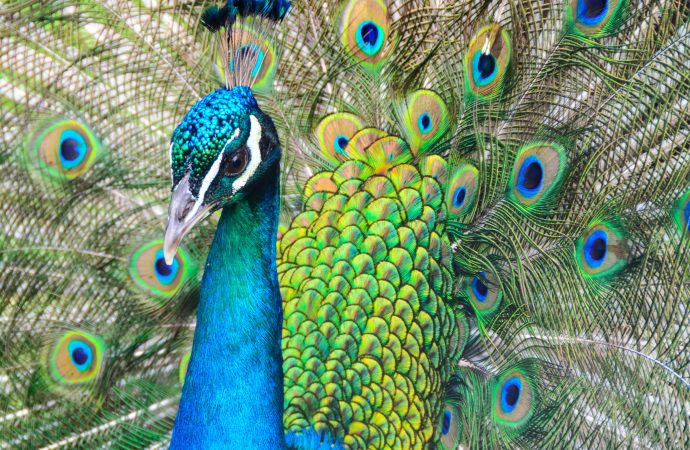The peacock, with its stunningly beautiful and vibrant plumage, has been a symbol of beauty, pride, and power in various cultures and religions for centuries. Its majestic appearance and grandeur have made it a popular subject of art, literature, and mythology. Join me as we explore the symbolism and significance behind this captivating bird. In
The peacock, with its stunningly beautiful and vibrant plumage, has been a symbol of beauty, pride, and power in various cultures and religions for centuries. Its majestic appearance and grandeur have made it a popular subject of art, literature, and mythology. Join me as we explore the symbolism and significance behind this captivating bird.
In ancient times, the peacock was regarded as a symbol of immortality, resurrection, and renewal. According to Greek mythology, the peacock’s tail feathers were believed to have come from the eyes of the giant Argus, who was slain by Hermes. The feathers were then presented to Hera, the goddess of marriage and fertility, who adorned her chariot with them as a symbol of her power and beauty. In Hindu mythology, the peacock is associated with the god Kartikeya, who is often depicted riding on the bird as a symbol of victory over evil.
In Christianity, the peacock is a symbol of the Resurrection, as its feathers represent the concept of eternal life. The peacock’s ability to molt and regrow its feathers also represents the idea of death and rebirth. In Christian art, the peacock is often depicted as a symbol of immortality and the afterlife.
In Buddhism, the peacock is associated with the bodhisattva Avalokitesvara, who is also known as the peacock king. The bodhisattva is often depicted riding on a peacock, which represents the transcendence of ego and the attainment of spiritual enlightenment.
In Hinduism, the peacock is revered as a sacred bird and is associated with the god Krishna, who is often depicted playing his flute surrounded by peacocks. The peacock is also associated with the goddess Lakshmi, the consort of Vishnu, who is often depicted sitting on a lotus flower surrounded by peacocks.
In Chinese culture, the peacock is a symbol of beauty, prosperity, and good luck. It is often depicted in art and literature as a symbol of wealth and luxury. In traditional Chinese medicine, the peacock’s feathers are used for their healing properties, and the bird is believed to possess powerful energy and vitality.
In Islamic art and culture, the peacock is a symbol of paradise and the afterlife. It is often depicted in paintings and tapestries as a symbol of beauty, grace, and spirituality.
In modern times, the peacock has also become a symbol of pride, confidence, and self-assurance. The phrase “proud as a peacock” is often used to describe someone who is confident and self-assured. The peacock’s beautiful feathers have also inspired fashion designers and artists, who have incorporated the bird’s striking colors and patterns into their designs.

















Leave a Comment
Your email address will not be published. Required fields are marked with *